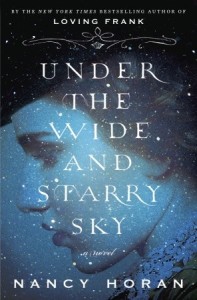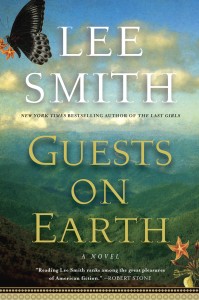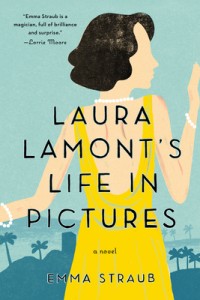 Drawn from the lives of Scottish writer and poet, Robert Louis Stevenson, and his unconventional American-born wife, Fanny Van de Grift Osbourne Stevenson (1875 to 1914): I don’t know the last time I read such an immensely satisfying, well-crafted, sweeping saga and learned so much – about the 26th most translated author of all time (according to UNESCO’s Index Translationum) and his devoted wife. This is a novel you settle into.
Drawn from the lives of Scottish writer and poet, Robert Louis Stevenson, and his unconventional American-born wife, Fanny Van de Grift Osbourne Stevenson (1875 to 1914): I don’t know the last time I read such an immensely satisfying, well-crafted, sweeping saga and learned so much – about the 26th most translated author of all time (according to UNESCO’s Index Translationum) and his devoted wife. This is a novel you settle into.
From the opening pages of a transatlantic journey from America to Europe, you recognize you’re in the hands of a highly-skilled author. The prose splendidly sweeps you along on a journey around the globe based on the lives of a famous literary figure and a wife you probably never heard of. According to USA Today (see “Novel Ideas: The Women Behind the Famous Men,” February 13, 2013), Nancy Horan’s 2007 debut novel, Loving Frank, “launched” a new sub-genre in historical fiction, one that makes “history more empathetic, revealing the inside scoop, the almost gossipy side.”
Although this is a hefty book, weighing in at just under 500 pages, Horan has structured it in 90 short chapters, so the reading is brisk, interesting, and inspirational.
Under the Wide and Starry Sky – a lyrical title you learn of its significance on page 159 – is beautifully written, uplifting, and ambitious the way much of Robert Louis Stevenson’s life was. He had an impressive zest for life and a prolific output, especially considering much of it was spent confined to a bed, due to chronic lung diseases, often nursed back to health by Fanny and her sacrifices.
At a young age, Louis discovered his passion for travel and writing. He believed:
“If you want to find out who you really are, then go travel … Every chance encounter, every change of landscape in the journey, offered itself up to his pen … to pour all that he witnessed through his soul and onto paper.”
That he was able to travel as much as he did was miraculous since he skirted death many times, his lungs hemorrhaging. Through it all, Louis feverishly and ferociously dreamt up colorful tales, a “collector of characters,” writing at an unimaginable pace: 30,000 words in three days! Louis and Fanny lived in many places around the world, including Skerryvore, Scotland and Bournemouth, England but the climate drove them away to healthier locales: Davos, Switzerland; Saranac, New York; Hyères, on the French Riviera; and the South Sea Islands, especially Samoa, where Louis was his healthiest and “experienced a kind of heaven: He was the water, the birds, the sweet-smelling air.”
For Louis, it was love at first sight for Fanny when 26 and she ten years older. Hers was a love that grew over time until “he was the most alive person she’d ever met,” despite his delicate physical nature and ability to thrive in solitude, whereas Fanny was robust and had to stay very busy.
We’re introduced to Fanny as the 34-year-old mother of three – Belle, Sammy, and the youngest, Hervey – fleeing her cheating husband in California using “one of the few respectable ways a woman can leave a rotten husband” at that time: studying art in Europe. Initially she tried Antwerp, then stayed in Grez-sur-Loing, France, where she befriends Louis’ charming cousin and later meets Louis, and then they both went to Paris.
In Paris, Louis discovers a place where a “man could devote his life to his art – and be taken seriously.” Indeed, he was obsessively serious about the craft of writing, infatuated with the beauty of prose. Besides painting, Fanny also enjoyed writing but endured great distress at being taken seriously. She served as Louis’ most insightful and candid advisor, which he both welcomed and balked at, one source of their tensions.
And there were many. Horan takes us through their highs and their lows – the relentless medical crises and financial stresses, especially before Louis’ work was published and his fame became established. Literary success crept up on Stevenson slowly. There’s also a family tragedy, estrangements, and blow-ups over Louis’ many male companions, whom Fanny resented for jeopardizing his fragile health over and over again, and, at one point, wondered if their closeness was homosexual in nature.
Many other characters people this fascinating book. Most are Louis friends and business associates, one being Henley, his publisher and literary agent in London; a handful become valued confidants of Fanny’s as well, such as the writer Henry James, whose “wickedly funny tongue brightened the house every time he entered it.” Fanny had a close relationship with Louis’ parents, Maggie and Thomas Stevenson, and his former girlfriend, Fanny Sitwell. The Pacific Island years brought new relationships with chiefs and natives, as Louis became deeply concerned about island politics and the impact of foreign governments (U.S., Britain, Germany) on the islands’ culture and way of life (which he wrote about in A Footnote to History: Eight Years of Trouble in Samoa, 1892).
Louis regaled in reading out loud to his family his stories, so we get to see him creating his memorable characters, like Long John Silver, Dr. Jekyll and Mr. Hyde. They are part of an enormous body of work for a short-lived life – Treasure Island, Kidnapped, The Strange Case of Dr. Jekyll and Mr. Hyde, The Silverado Squatters, New Arabian Nights, The Merry Men, The Body Snatcher, A Child’s Garden of Verses, The Black Arrow, In the South Seas, and many other works of fiction, poetry, plays, essays, and travel writings.
Horan tells us that sometimes she used Robert Louis Stevenson’s own words in the novel’s dialogue, dreamed up the rest. Unless we return to the wealth of original letters and documents she extensively researched, we cannot discern whether the wonderful prose belongs to Stevenson or Horan, so expertly woven together they are. For our fictional entertainment, does it really matter? Two uplifting examples:
Fanny may have experienced dark days, but Louis saw the world as a cup filled over: “I want to take this day, fold it up, and put it in my pocket so I can have it again and again.” Similarly, he felt the purpose of writing was to bring joyfulness:
“…writers should find out where the joy resides and give it a voice. Every bright word or picture is a piece of pleasure set afloat. The reader catches it and he goes on his way rejoicing. It’s the business of art to send him that way as often as possible. I have to believe that every heart that has beat strongly and cheerfully has left a hopeful impulse behind it in the world.”
Because Nancy Horan found inspiration in the lives of Robert Louis and Fanny Stevenson, she too has brightened our world.
Well worth the January wait! Lorraine





